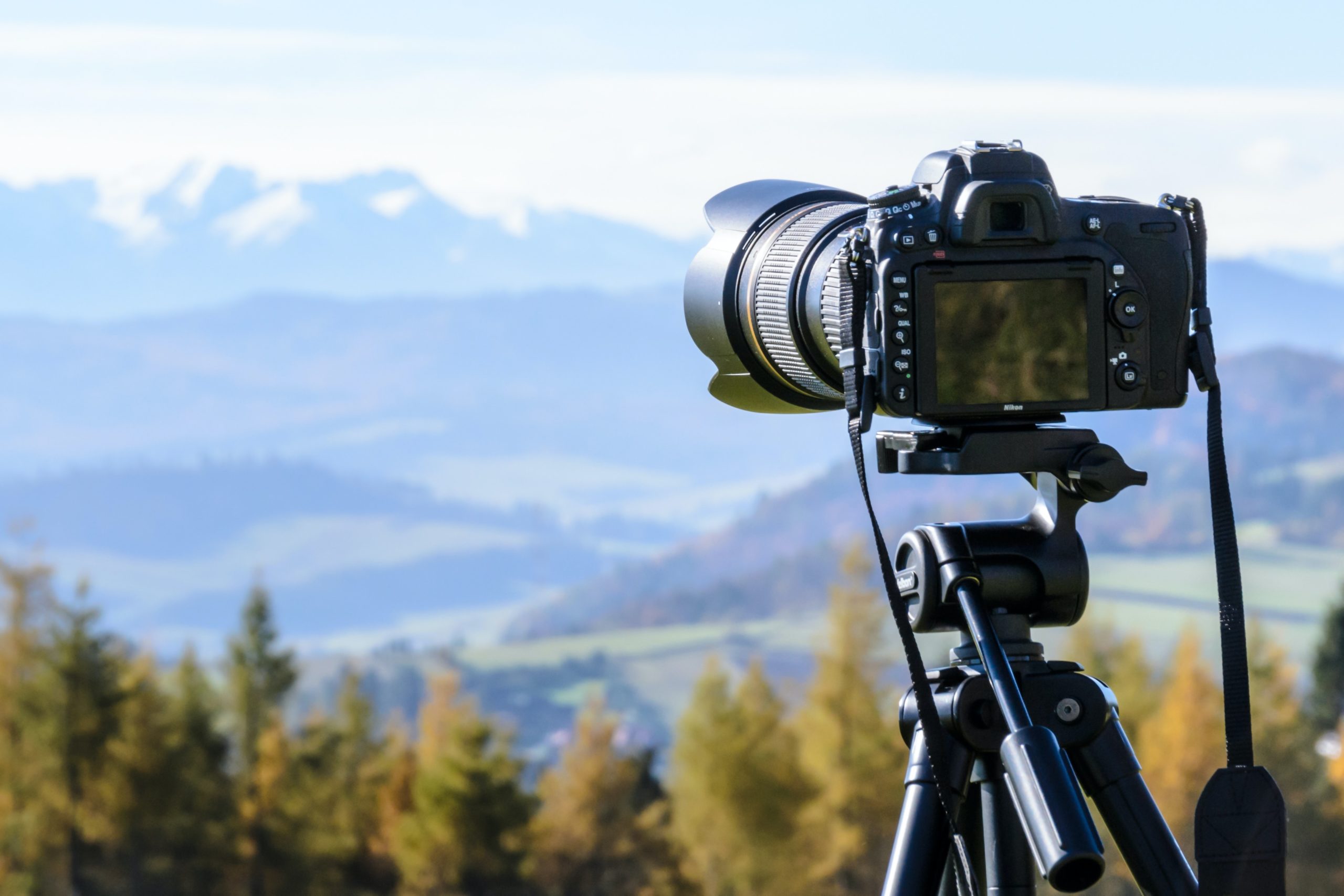"Content is King." Great, but how do you record the best content you possibly can? While you can make 100% of your content with your smartphone, if you want to delve into more professional waters, a dedicated camera will be in your future. Here's a (very short) list of the best video cameras for beginners to get your started.
1. Your Smartphone
When you first get started, you should start with a camera that is easy to use and understand. What better way to start than with the camera you've undoubtedly already become accustomed to.
If you have a smartphone from the last 3-5 years, you already have a camera capable of filming in 4K or better. Pair it with a phone tripod or mobile gimbal and you can start filming right away.
The problem is that most smartphones aren't equipped with external microphones or good image stabilization. And while most people don't mind watching shaky handheld footage on YouTube, when it comes to creating professional quality videos, those issues need to be addressed before they become problems.
However, if you're serious about filmmaking and want to get the best performance out of your camera, here are five options that'll give you better image quality, more features and more control over how your videos turn out:
2. Sony A6600
Sony’s latest mid-range mirrorless camera is a great all-rounder with a flip screen and a wide range of features that make it a perfect video camera for beginners. It has a 24MP APS-C sensor, which means you can shoot in low light and still get some beautiful shots.
The A6600 also sports 4K video recording at 50 Mbps and can record up to 60p in Full HD at 100 Mbps. That’s not only great for shooting video, but also for slow motion too as you can simply record at 50p or 60p and then slow down the footage in post. There’s also an expandable battery slot that lets you use larger batteries if you need longer battery life during longer shoots.
3. Canon EOS M50 Mark II
The Canon EOS M50 Mark II is a great choice for those looking to get started with video without spending too much money. This camera also features an APS-C sensor, which rivals the low-light performance of the majority of other cameras on this list. It also comes with built-in image stabilization, which helps keep your footage steady even when using longer focal lengths or lenses with large maximum apertures.
The M50 Mark II has two main built-in microphones that record stereo audio but don’t feature any external ports for adding an external microphone like you would find on other models from Canon. You can control audio levels through the menu system or by adjusting them during playback on the rear LCD screen. The downside is that it doesn’t have 4K recording capabilities like some of Canon’s other mirrorless cameras do (such as the EOS R mentioned later).
4. Panasonic LUMIX G100
While Canon and Sony are the industry leaders, many have chosen the Panasonic LUMIX G100 as an alternative. While its image quality isn’t as good as the two leaders’, its price point makes it a competitive option.
It has a 20.3MP CMOS sensor and a Micro Four Thirds lens mount. These lenses are generally more compact than the norm, and some creators prefer the images it produces.
5. Sony A7S Mark iii
Sony’s A7s cameras have been lauded by content creators for years. If you have the budget, investing in an A7S iii will cover all of your bases for years to come.
The camera boasts a 12-megapixel sensor with a wide dynamic range, making it ideal for shooting video in low-light situations. It also comes equipped with Sony’s 4K XAVC HS codec and supports 4K recording at up to 30 fps. Its ISO range goes up to 409,600 (expandable up to 102,400) which makes it ideal for shooting in dark environments.
Even though this camera's price point is well above that of the previously mentioned video cameras for beginners, the A7s iii is seen as the king of the mirrorless camera space.
6. Canon EOS R
While Canon dragged their feet with taking mirrorless cameras seriously, their new “R” line is on par with Sony’s best offering and delivers stunning image quality. The EOS R has a gorgeous 24-megapixel sensor that delivers excellent low-light performance, plus it’s capable of shooting 4K video at 30 fps.
Canon also includes its Dual Pixel AF system with every EOS R camera, which allows for fast and accurate autofocus, even in live view mode. This autofocus is arguably the best you'll find and is the same system Canon uses in their cinema camera line.
There are some limitations compared to the Sony A7 iii — the EVF is not as good as Sony’s OLED viewfinder (which is one of the best in the business), and there’s no IBIS (in-body image stabilization). But if you want a high-end mirrorless camera from a trusted brand name and you don’t mind paying extra for it, then this should be at the top of your list.
Conclusion
There are endless options to choose from, and decisions to be made on whether you’re Team Sony, Canon, or other. But when it comes to choosing the best video camera for beginners (and beyond), you can’t go wrong with any camera on this list.



